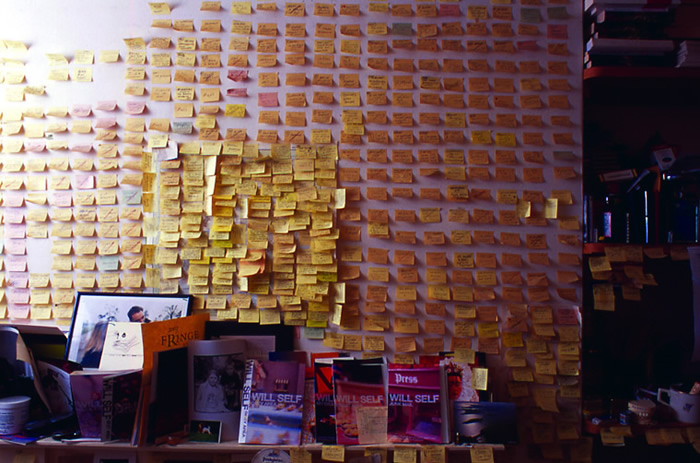Last year I bought a copy of JG Ballard’s last novel, Kingdom Come, a dystopic tale of the near future in which bored suburbanites descend into anomic violence as they retreat inside a giant shopping mall. Predictably, I bought my copy at the Bluewater shopping mall in north Kent, on the outskirts of London. Bluewater held the title of Britain’s biggest shopping mall for a number of years and it is surpassing large: a huge circular corridor that has become a destination. I asked a police officer where the Waterstones was and discovered she was a good old-fashioned bobby-on-the-beat – her beat having been, for seven years, to walk slowly around and around . . . Bluewater.
But I wasn’t fettered by Bluewater’s surly gravity, any more than I was galvanised by rampant consumerism. Novel purchased, I took a cab over the soaring Queen Elizabeth II bridge to Essex, where I alighted at Bluewater’s twin establishment: the Lakeside shopping mall in West Thurrock. I headed for the Lakeside branch of Waterstones, where I . . . well, you guessed it: I returned my copy of Kingdom Come. This surreal little exercise was undertaken for the BBC Radio 4 documentary Malled: Sixty Years of Undercover Shopping, and I’ve detailed it here purely in order to illustrate this point: I have more than a passing interest in shopping malls.
This is why the events of a fortnight ago, when Family Self went up to Manchester for what is termed, I believe, a “city break”, seemed quite so bizarre. My wife had booked us all in to a showing of the latest Bond film at the Imax cinema at the Trafford Centre. “Why the Trafford Centre?” I taxed her. “It’s in Trafford, which is five miles from the city centre.” She looked at me as if I were a complete ass, but refused to enlighten me. My revelation came later, when we were wandering the rococo halls of the Trafford Centre, marvelling at the lashings of gold leaf applied to the serried columns as our soles slapped on the Italian marble flooring. My wife couldn’t believe that one such as I, obsessed by what the French philosopher Marc Augé has named “non-places”, didn’t know about the Trafford Centre.
But I didn’t – it was a 207,000-square-metre hole in my map of the world. I knew nothing of the bitter and protracted wrangling that attended its inception, as successive planning applications were rejected by ever higher authorities, until our Noble Lords had to step in to ensure future generations will be able to buy their schmutter at TK Maxx and then sip their lattes at Starbucks without having to brave the harsh Lancashire elements. Did I feel small as my savvier spouse led me through these storied halls? You bet your waddling, wobbling, standing-still-on-the-travelator bum I did. How could I not have known about the great central dome of the Trafford mall, which is bigger – and statelier – than that of St Paul’s? How could I have been unaware of the Orient, Europe’s largest food court, with its seating for 1,800 diners, served by a plethora of exciting outlets including Harry Ramsden’s, Carluccio’s and those piquant bun-pushers, McDonald’s?
Actually, the Orient completely bowled me over. The Trafford Centre’s imagineers point to the nearby Manchester Ship Canal as influencing this wholly novel and utterly weird space, which is formed by a sort of Möbius strip of 1930s ocean-liner design, being at once superstructure – railings, funnels, tables arranged to simulate the deckchairs on a sun deck – and interior. However, nothing like this ever cruised by Runcorn. Not that I object to this, any more than I objected to the cluttered corridor full of orientalism – noodle bars, sushi joints, all-you-can-eat Chinese barbecues – that debouched from it and led us back into the weirdly glistering main retail areas, with their ornamental griffins and neoclassical columns bodged up out of medium-density fibreboard.
The Trafford Centre’s imagineers also make great play of design features – such as the aforementioned griffins – that are meant to tie the humongous mall to its hinterland (these are the heraldic symbols of the de Traffords, who used to own hereabouts), and to the north-east’s proud industrial heritage. But this is all ornamental balls; the truth is that the Trafford Centre’s ambience is so sumptuously wacky, it could quite reasonably be twinned with Las Vegas.
While the rest of the family went in search of retail opportunities, I watched the Mancunians process. It occurred to me that if there were any influences at work here – besides the Baudrillardian ones of hyperreality and simulation that underpin so much of the present-day built environment – it was the presence of a large British Asian community. The only people who didn’t look out of both place and time, wandering about among all the gilded pomp and crystalline circumstance, were women wearing saris, shalwar kameez and burqas. Tracksuit bottoms and hoodies just didn’t cut it – although, I concede, come the breakdown in civil society anticipated in Kingdom Come, this pseudo-sportswear will come into its own as the perfect pillaging outfit.
